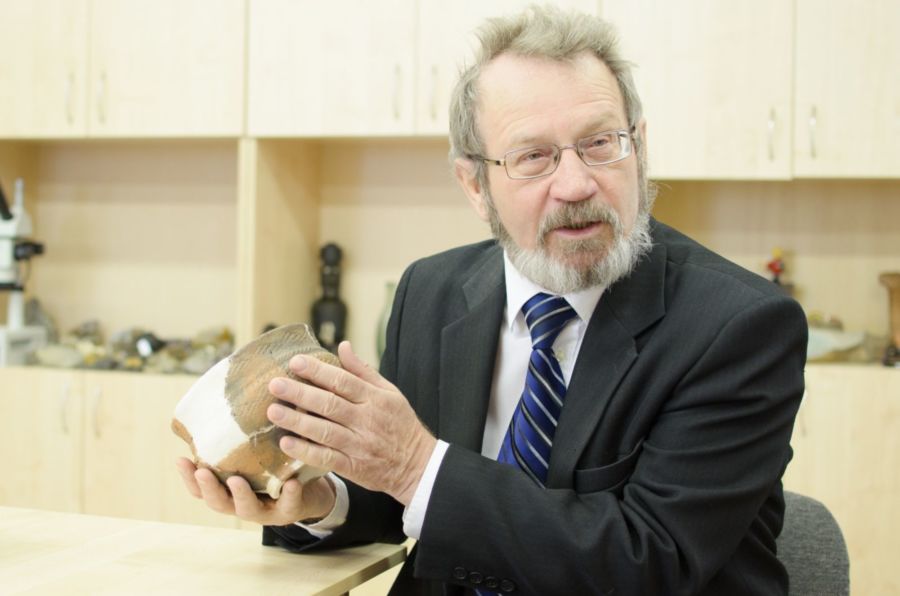Research fellows of the Eurasian Studies Research and Education Centre of the Institute of Media, Social Sciences and Humanities conduct big-scale research on the historical and cultural heritage of the Chelyabinsk Region from the Stone Age up to and including the contemporary times. Scientists conduct field archaeological research in the South Trans-Urals region, and apply the methods of natural sciences to study the discovered ancient artefacts and methods of experimental archaeology. The Director of the Centre is Doctor of Sciences (History), Professor Aleksandr Tairov.
Main fields of research
The main research field of the Eurasian Studies Research and Education Centre (ESREC) is a comprehensive study of the development processes of human society on the territory of Northern Eurasia from antiquity to the present day. Within the frameworks of this direction, the staff members of ESREC are studying the problems of cultural genesis, the reconstruction of cultural and historical processes taking place in Eurasia, as well as carrying out protection and rescue operations to preserve the historical and cultural heritage.
Another interesting field of work is the study of nomadic societies in the steppes of the South Ural region and Central Eurasia.
Leading Research Fellow of the Institute of History and Archaeology of the Ural Division of Russian Academy of Sciences and leading Research Fellow of ESREC, Doctor of Sciences (History) Sergei Botalov, Candidate of Sciences (History) Gaiaz Samigulov, and Candidate of Sciences (History) Ivan Grudochko, as well as Junior Research Fellow Kseniia Margarian successfully investigate the problems of the formation of pastoral nomadism and its stages of development.
"The more you deal with the problem, the more questions arise that require further research. Nowadays, natural scientific research methods are being actively introduced, and genetic research is increasingly being used. For the early Iron Age and the Middle Ages, such studies have been carried out. Two big works have already been published that deal with nomadic themes – on the early Iron Age and on the early Middle Ages," says Director of ESREC Aleksandr Tairov.
Research fellows of ESREC are engaged in the implementation of big-scale cross-disciplinary research at all stages of work: from field work to modelling of historical processes.

Work results
In 2020, three projects by the ESREC employees received support from the Russian Foundation for Basic Research: "Lifestyle and Social Structure of the Early Nomads of the South Ural Region at the End of the 7th–3rd Centuries B.C." (supervised by Natalia Berseneva), "The South Ural Region in the System of the Nomadic World of Eurasia in the Second Half of the 1st Millennium A.D." (supervised by Ivan Grudochko), and "Fulfilling the Potential of the Historical and Cultural Heritage of the Chelyabinsk Region Using the Method of Archaeological Modelling" (supervised by Ivan Semyan). The latter one, in particular, will allow for the study of the most ancient chariots dating back to 2050-1850 years B.C. that existed in the South Ural region.
The scientists publish their research works in prestigious international journals.
"Among the new publications are the articles on the problems of the Bronze Age and the Early Iron Age of the South Ural region, on the emergence of equestrianism in the Ural-Kazakh steppes, on the early medieval genetic data from the Ural region, and on individual finds stored in the People and Technologies of the Urals University Museum. In the future, these studies will continue. There are many questions that can be solved using modern research methods. We are following a general trend in the development of archaeological science in line with interaction with the STEM sciences. And the results are quite good," says Director of ESREC Aleksandr Tairov.
The Eurasian Studies Research and Education Centre successfully cooperates with leading Russian and foreign experts. Among the partners of ESREC in Russia are the Institute of Geophysics; the Institute of Plant and Animal Ecology and the Institute of Mineralogy of the Ural Branch of the Russian Academy of Sciences; the Institute of Ethnology and Anthropology of the Russian Academy of Sciences; the Institute of the Earth Cryosphere and the Institute of Archaeology and Ethnography of the Siberian Branch of the Russian Academy of Sciences; and the Institute of Archaeology of the Russian Academy of Sciences.
Foreign partners of ESREC are Harvard Medical School; University of Gothenburg; Johannes Gutenberg University of Mainz; Goethe University; Free University of Berlin; and University of Pittsburgh.
South Ural State University (SUSU) is a university of digital transformations, where innovative research is conducted in most of the priority fields of science and technology development. In accordance with the strategy of scientific and technological development of the Russian Federation, the university is focused on the development of big scientific interdisciplinary projects in the field of digital industry, materials science, and ecology. In the Year of Science and Technology, it will take part in the competition under the Priority-2030 program. The university acts as a regional project office of the World-class Ural Interregional Research and Education Centre (UIREC).




